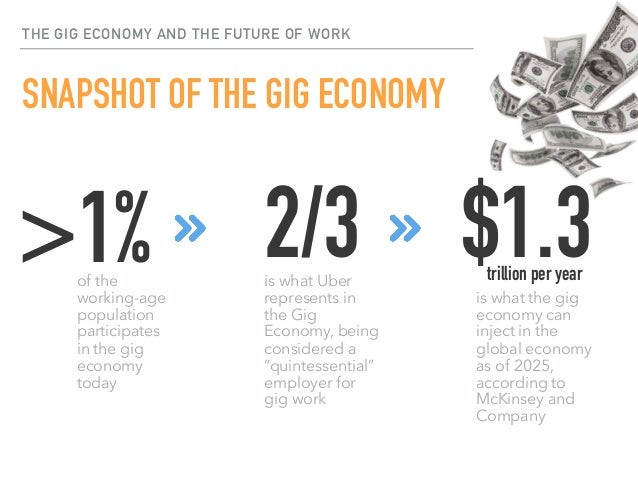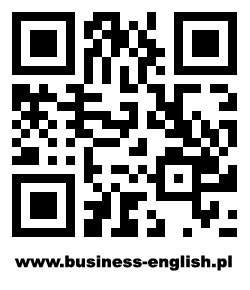The Next Big… Gig!
 Corporate drone? Keyboard jockey? Workaholic? These spiteful names are no longer relevant to the modern professional, as the workplace itself is going virtual, losing not just keyboards or old workplace ethos, but also… actual employees. That’s right: the new breed of corporate worker may never have to set foot at their employer’s headquarters or sign a full-time contract. Are you ready to follow suit?
Corporate drone? Keyboard jockey? Workaholic? These spiteful names are no longer relevant to the modern professional, as the workplace itself is going virtual, losing not just keyboards or old workplace ethos, but also… actual employees. That’s right: the new breed of corporate worker may never have to set foot at their employer’s headquarters or sign a full-time contract. Are you ready to follow suit?
Pervasive disconnect
The labour market has been slowly warming up to the idea that permanent employees are no longer an immutable part of the business equation. The computerized workspace automated many tasks that were essential a mere decade ago, so professionals could stop focusing on skills like typewriting or taking phone calls. Instead they could hone abilities related to actual job tasks. This ushered in a new, more professionally focused workplace culture.
Similarly, in the age of post-computer workplace, remote working or mobile connectivity are no longer extrinsic parts of the job. These are a must at any level, from back-office to C-suite. And these new tools that initially were devised to aid the office worker on the go, are now basic elements of the more advanced, modernized office-less culture. As a result, many are seriously considering if a full-time, in-house worker is needed at all. Enter agile employment, aka gig working.


In a nutshell, gig workers are the remote workers specializing in full-scope core business tasks. Unlike freelancers, gig workers have a broader understanding of their job and are oriented at project completion. They are able to function independently, yet with a greater outlook at the larger picture, exactly like a regular in-office employee.
Financially they are a boon to the employer. There is no need to maintain office space for them. They do not need a retirement plan, since they are not on permanent staff list. Their salary structure rarely includes perks or benefits. Essentially, there’s no pay packet as such, just payment for services rendered, plain and simple.
Gig workers do what it says on the tin: they work a gig to completion, then move on. It can be any type of work, so long as it can be repeated, packaged and proceduralized as a project (or „gig”), can be shared with such a worker. They are a more responsible party than a simple task owner (freelancer), and they will be able to perform this job with the understanding of how it impacts the client, the company or other members of the team.
Despite similarities, modern-day gig workers are much more than remote employees or freelancers. Because they are extensively trained and continue to increase their qualifications like regular office workers, they have all the skills and experience of their on-site counterparts. They are essentially adopting the same type of employment style that used to be the domain of artists, journalists or musicians, hence the name „gig”. They must have broader and more varied qualifications than freelancers, because they tend to perform a larger scope of tasks and have the same responsibilities as regular workers. Freelancers, on the other hand, are only given a task, delivery date and quality expectations. Once they deliver their product or service, they are not interested in its further fate – something a regular worker at a company is usually at least partially aware of. Gigs, then, offer nearly the same level of engagement as any in-office job, except without the career-long in-house commitment to any specific employer.
The shared economy of a job
According to one site, gig workers will soon become full-fledged regular participants in a shared economy. Already there are specialist work-share and freelance-hiring platforms out there that serve the niche industries that work in this way. However, there are plans in motion to launch much larger, market-wide bases that will do for on-demand work what Uber has done for taking a cab and AirBnb for finding a place to crash. The idea is for all types of non-office workers to be found, selected, rated and paid through such platforms per each project or contract directly by their hiring party.

Gig working is strongly linked to agile methodology and mindset, but technologically it owes everything to the cloud. On the side of the employer, cloud has been the name of the game for a while now, and it’s no longer just a fancy umbrella term.
Nearly all parts of the company’s business can now be accessible from the cloud. This means that all types of tasks can be performed from within or from without the company. This has become a breeze with the advent of federated login, such as Azure. Federation lies at the heart of modern intra-company cloud applications: you get just one login and password to connect to all the databases, websites and services that are needed for your company’s tasks. It can be anything from an online repository of knowledge like a company Sharepoint, a data server like FTP store to any number of online in-company services for employees. What that entails is that staff can – and often do – work from outside of the company on actual core job tasks, not just ones that happen to be doable from home. With a smart token system, a newly onboarded gig worker can be granted such federated login for a short time, do his/her tasks and be removed from the system soon after, maintaining the security of the system while making it a snap to get in and out of the company’s infrastructure at a click of a button.
Once you add to the mix the amazing versatility of the modern smartphone and its support of the cloud, you can literally work from anywhere. And we’re not just talking teleconferencing or answering emails. You can now take a phone out on the plane, in the park or while out at sea and do serious design work, perform spreadsheet operations, run data analysis, do QA checks… The list goes on.

Consider recent Randstad report on the gig working in the US. According to the report, by 2025 (just 8 short years from now) as much as 69% of the workforce will be hired this way. Let that number sink in for a moment.
Now, this is the future. But the present is catching up really fast. Between the years 2012 and 2015, the report found, there has been a 155% increase in the number of companies that were committed to keeping a mixed workforce, combining permanent, contract and on-demand gig workers. And in 2016, 46% of firms expressed their continued engagement of the agile workforce, as opposed to just 18 percent in 2012. „This preference for working in what we’re now calling this agile model, it continues to gain steam, gain strength and gain preference with all classifications of employees, though predominantly among young workers,” says Jim Link of Randstad North America. In his opinion, workers of tomorrow will not have careers at all. Instead, they will be continuing on a path of constantly changing job challenges. „You can go from an experience to an experience to an experience and never work for a company, per se,” he adds.
So what will the worker of tomorrow look like and what will he/she do? Most likely the same things they are doing now, except without ever stepping into an office or turning on a computer. Their work will be mobile, and their lifestyle will be even less tied to one firm than it is nowadays. And according to some in the industry, eventually some of their management will be done… by AI! What a world we live in!
VOCABULARY
drone – drona, truteń
jockey – dżokej
workaholic – pracoholik
spiteful – złośliwy
ethos – etos
breed – typ, rodzaj
to set foot somewhere – postawić gdzieś stopę, pojawić się gdzieś
headquarters – siedziba główna firmy
full-time – w pełnym wymiarze godzin
to follow suit – pójść za czyimś przykładem
pervasive – dominujący, wszechobecny
disconnect – rozdźwięk, rozłączenie
labour – praca (UK)
to warm up to sth – przekonywać się do czegoś
permanent – stały
immutable – niezmienny, trwały
equation – równanie
essential – podstawowy, niezbędny
mere – ledwie, tylko
typewriting – maszynopisanie
to hone sth – doskonalić coś
to usher sth in – wprowadzić coś (np. nową erę)
remote – zdalny
extrinsic – zewnętrzny, pochodzący spoza
a must – konieczność, coś obowiązkowego
back-office – zaplecze
C-suite – szczebel kierowniczy firmy
initially – pierwotnie
to devise – wymyślić, zaprojektować
on the go – mobilny, w podróży
to consider – rozważyć
in-house – na miejscu, w zakładzie
enter X – oto X, nadchodzi X
agile – zręczny, zwinny
aka (also known as) – znany również jako
gig – fucha, występ
in a nutshell – w skrócie
full-scope – w pełnym rozmiarze, na pełną skalę
core – kluczowy, podstawowy
freelancer – frilanser, wolny strzelec
outlook – perspektywa
boon – skarb, dobrodziejstwo
retirement plan – plan emerytalny
staff – pracownicy, personel
salary – płaca
perk – dodatek (do pensji)
benefits – świadczenia, pakiet świadczeń
pay packet – pensja
to render service – świadczyć usługę
sb does what it says on the tin – ktoś robi to, co się od niego oczekuje
completion – ukończenie
to move on – przejść dalej/do czegoś innego
to proceduralize sth – strukturalizować coś jako proces
responsible – odpowiedzialny
party – strona kontraktu/umowy
to perform – wykonać
to impact sb – mieć na kogoś wpływ
modern-day – współczesny (tylko przed rzeczownikiem)
extensively – obszernie, w wielkim stopniu
counterpart – odpowiednik
domain – domena, obszar (np. czyjś)
hence – stąd
to tend to do sth – zazwyczaj coś robić
expectations – oczekiwania
fate – los
aware of – świadomy (czegoś)
engagement – zaangażowanie
career-long – w trakcie całej kariery, na całą karierę
commitment to sb – oddanie komuś, zaangażowanie się z kimś
full-fledged – pełnoprawny
specialist – specjalistyczny
work-share – program dzielenia się zadaniami (z kontraktorami, wolnymi strzelcami, innymi kolegami z zespołu itp.)
to serve sb – służyć komuś
niche – niszowy
plan in motion – realizowany właśnie plan
on-demand – na żądanie, przy zapotrzebowaniu (tylko przed rzeczownikiem)
cab – taksówka
a place to crash – miejsce do przenocowania (pot., US)
to rate sb – ocenić kogoś
lining – podbicie, wyściółka
mindset – sposób myślenia
to owe sth to sth – zawdzięczać coś czemuś
sth is the name of the game – w czymś chodzi przede wszystkim o coś
fancy – wyszukany
umbrella term – termin zbiorczy
from within – od środka
from without – od zewnątrz
sth is a breeze – coś jest łatwizną
advent – nadejście
to lie at the heart of sth – leżeć u podstaw czegoś
intra-company – wewnątrz spółki
repository – repozytorium
store – magazyn
to entail – oznaczać, pociągać za sobą
doable – wykonalny
token – token, tymczasowy kod/zezwolenie na przeprowadzenie operacji (np. bankowej)
onboarded – wprowadzony do pracy (o nowym pracowniku)
to grant sb sth – przyznać coś komuś
to maintain – zachować
to make sth a snap – zrobić z czegoś kaszkę z mleczkiem, uczynić coś bardzo łatwym
to add sth to the mix – dodać coś do zestawu, dorzucić coś
amazing – niesamowity
versatility – wielofunkcyjność
spreadsheet – arkusz kalkulacyjny
QA checks – sprawdzenie poziomu jakości produktu
to sink in – dotrzeć do czyjejś świadomości
to catch up – nadgonić, dogonić
committed to sth – zobowiązany do czegoś, zaangażowany w coś
to combine sth and sth – łączyć coś z czymś
to express sth – wyrazić coś
as opposed to – w przeciwieństwie do
to gain steam – nabierać rozpędu
to gain preference with sb – zyskiwać na popularności wśród kogoś
predominantly – przede wszystkim, przeważnie
challenge – wyzwanie
per se – jako taki, sam w sobie
to step into sth – wejść gdzieś, wkroczyć
by Prochor Aniszczuk







